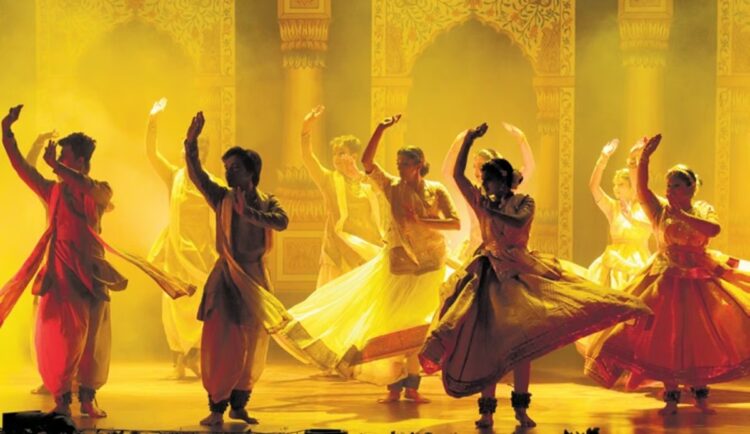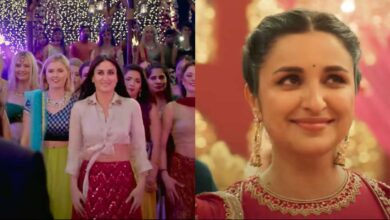The Traditional Techniques of Shinjini Kulkarni
The 30-year-old granddaughter of Pandit Birju Maharaj, Shinjini Kulkarni, had no desire to pursue a career in dancing. Her priorities were the civil services, not carrying on her family’s nine-generation tradition. “Although I’ve always liked Kathak, I never gave it any thought as a career. It was never expected of me to pursue Kathak as a job since my mother and father both had different career choices. They are both visual artists, adds Kulkarni.

But when she threw herself into studying for the UPSC exams a decade ago, she realized that it would need a demanding schedule with little time for Kathak. Furthermore, the Kalka Bindadin Gharana scion was unwilling to make the sacrifice. As she prepares to sing “Kasturi,” a musical ode to Rabindranath Tagore, she travels back in time to the start of the decade, the momentous choice that she took.
Following his graduation from St Stephen’s College and his return to the family’s hometown of Lucknow in 2014, Kulkarni was given a fantastic chance. “Being a member of a family of Kathak dancers renowned for their extraordinary skill led to my invitation to perform. I thus had the honor of having people wager on me,” she says. But this was just the start; she still hadn’t decided to devote herself entirely to studying Kathak professionally.
After her performance, Kulkarni got a surprise phone call. She was asked to play at another occasion by an audience member. “The caller was unaware of my history or background. She remembers that he only stated, “You are a new dancer, and we encourage new talent.” She was really happy to get this invitation from someone who was not aware of her family’s history.
Since I was five years old, I had been performing, often because of my ties to my family. I was even “given” my first professional show. Still, it was good to hear from someone who was just interested in my abilities. I felt like I had really earned a chance for the first time,” she recalls. Kulkarni was determined to follow Kathak as a career after that and never wavered. And so her quest to locate her own space got underway.
Establishing one’s own personality within a legacy-laden art form that has been handed down through the years is one of the biggest obstacles facing an artist. The fight to preserve tradition while adding a personal touch never ends. Kulkarni muses, “I would have said I wanted to find my voice if you had spoken to me ten years ago.” But as time goes on, experience has taught me that one’s uniqueness must take a backseat and that the work itself is ultimately what counts.”
Kulkarni thinks that although every artist is unique, the case for originality shouldn’t take precedence over the work of art. “A skilled actor, for instance, ‘becomes’ the character and alters it, unlike other performers who prefer to let their own attributes dominate the roles they represent. For dancers, the same holds true. In Kathak, role-playing and storytelling are done via “abhinay.” The key to real success, according to her, is to shape ourselves into the roles we take on.
Being raised by Birju Maharaj
Does her gender make it harder for her to carry on the legacy? Not really. “I don’t believe it was particularly difficult to carry on the family heritage as a granddaughter—Birju Maharaj is her maternal grandpa. The challenge was carrying on the heritage of her mother’s side of the family, she explains. While “when you take forward your maternal family’s profession, a lot of people dismiss you for not being the ‘true torchbearer,'” carrying the paternal side of the profession is more socially acceptable. This no longer matters to Kulkarni. She was surrounded by legends as a child and picked up knowledge from them. Therefore, she continues, “it does not change the reality, even if some people dismiss it.”
It’s interesting to note that Kulkarni was ignorant of her grandfather’s status as a child. “I used to hang out with him, crack jokes with him, and often tell him about my crushes. She claims, “I took a lot of liberties with him that the rest of the world dared not.” She didn’t realize how important her grandpa was until she was a teenager. “It matters not who picks up the baton—myself or my cousins—but that we recognize that we are all Lucknow Gharana soldiers and that we have a duty to carry it on,” she adds.
The slog
Carrying on a legend’s legacy, however, requires a significant investment of time, energy, and training. “On stage, people see only 10% of what’s really going on,” the speaker claims. It’s not just about the glitz. “The ideation process is the most annoying aspect. Any party will do, but your thoughts will be trapped there.
on your notion. There are also workshops, co-performer rehearsals, meetings with lighting and set designers—a lot of work goes into the background, the actress adds.
According to her, the goal behind “Kasturi” was to bring Rabindranath Tagore to a pan-Indian audience. Creation and conceptualization of a production might take more than a year. I had this concept in March of last year. While his works are unknown to some, many are aware of him despite not knowing Bangla. We want to address the many facets of his brilliance via this and incorporate it into a performance,” she explains.
“Kasturi” is showing at Kamani Auditorium starting at 7:00 p.m. today.







